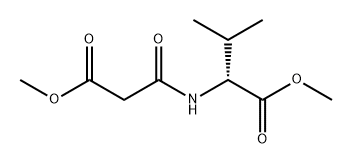Uses
ZLc-002 is a selective inhibitor of nNOS-Capon coupling. ZLc-002 suppresses inflammatory nociception and chemotherapy-induced neuropathic pain. ZLc-002 can be used for the research of anxiety disorder and inflammation[1][2][3].
in vivo
ZLc-002 (30 mg/kg; i.p. from 4-10 days until 46 days after stroke everyday) improves motor function in tMCAO mice[1].
ZLc-002 (40 mg/kg; i.v. once per day for seven days) improves chronic mild stress (CMS)-induced anxiety-related behaviours[2].
ZLc-002 (10 μM 1 μL; hippocampus injection once per day for seven days) improves corticosterone (CORT)-induced anxiety-related behaviours[2].
| Animal Model: | tMCAO mice[2] |
| Dosage: | 30 mg/kg |
| Administration: | Intraperitoneal injection; 30 mg/kg per day; from 4–10 days until 46 days after stroke |
| Result: | Signally ameliorated sroke-induced impairment of motor function and recovered from stroke in the delayed phase. |
| Animal Model: | Adult male ICR mice with CMS exposure[2] |
| Dosage: | 40 mg/kg |
| Administration: | Intravenous injection; 40 mg/kg once per day; from 21-27 days of CMS exposure for 7 days |
| Result: | Showed a therapeutic effect in CMS-induced anxiety disorder. |
| Animal Model: | Adult male ICR mice with CORT[2] |
| Dosage: | 10 μM 1 μL |
| Administration: | Hippocampus injection; 10 μM 1 μL once per day; from 21-27 days of CORT reatmentfor 7 days |
| Result: | Showed a therapeutic effect in chronic stress-induced anxiety disorders. |
References
[1] Ni HY, et al.Dissociating nNOS (Neuronal NO Synthase)-CAPON (Carboxy-Terminal Postsynaptic Density-95/Discs Large/Zona Occludens-1 Ligand of nNOS) Interaction Promotes Functional Recovery After Stroke via Enhanced Structural Neuroplasticity. Stroke. 2019 Mar;50(3):728-737. DOI:10.1161/STROKEAHA.118.022647
[2] Zhu LJ, et al. nNOS-CAPON blockers produce anxiolytic effects by promoting synaptogenesis in chronic stress-induced animal models of anxiety. Br J Pharmacol. 2020 Aug;177(16):3674-3690. DOI:10.1111/bph.15084
[3] Zhu LJ, et al.CAPON-nNOS coupling can serve as a target for developing new anxiolytics. Nat Med. 2014 Sep;20(9):1050-4. doi: 10.1038/nm.3644. Epub 2014 Aug 17. DOI:10.1038/nm.3644






